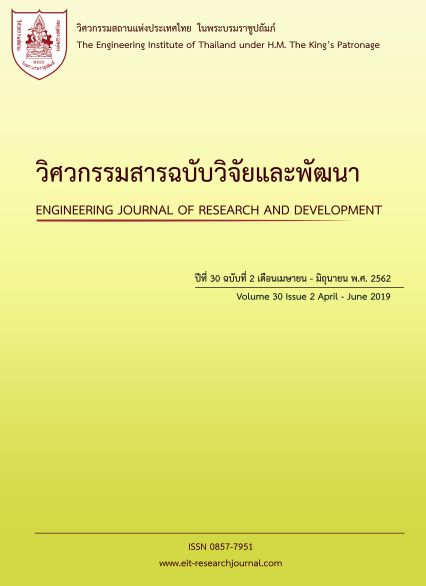พฤติกรรมการกระจายน้ำอุ่นในแม่น้ำเจ้าพระยาที่มีอิทธิพลของน้ำขึ้น-น้ำลง
Main Article Content
Abstract
The objective of this study is to collect hydraulic data and river temperature data to analyse the behaviour of the warm water distribution in the lower Chao Phraya River, influenced by the rise and fall of sea level. There were nine field trips to collect data, of 24 hours/trip, covering the rainy season, the winter, and the summer. The results show that the influences on water temperature are sunlight, flow velocity, water depth, and source of warm water. In the cases of the high and moderate discharge seasons, during periods of lowering water levels approaching the lowest level, and just after the lowest level has passed, the water surface has a high slope. When the flow in the Chao Phraya River exceeds 2,000 cubic meters per second, the fresh water flows into the sea with a high velocity. The mixing process takes place quickly within the appropriate water depth. Vertical temperature transfers between the flow layers is very efficient. It allows the warm water mass at the water surface, which is warmed by sunlight, to mix well with cooler water in deeper layers. Considering the case of a neap tide, the sea level does not rise and fall much. Therefore, the vertical distribution of water temperature has a slightly narrower range compared to during a spring tide. Considering cases of warm water discharge from a source, stream velocity and appropriate water depth help warm water to mix with cooler water within a limited space from the river bank, only about 40% of the width of the river.
Article Details
The published articles are copyright of the Engineering Journal of Research and Development, The Engineering Institute of Thailand Under H.M. The King's Patronage (EIT).


